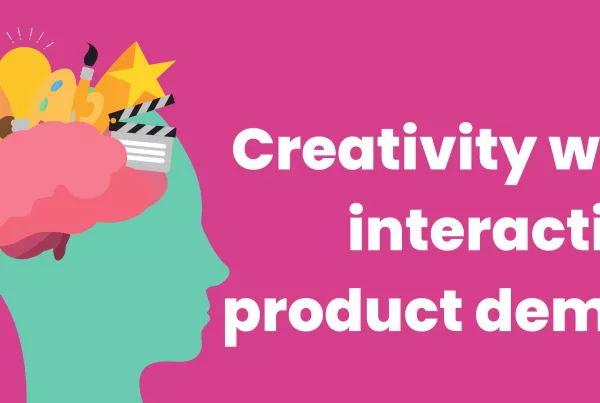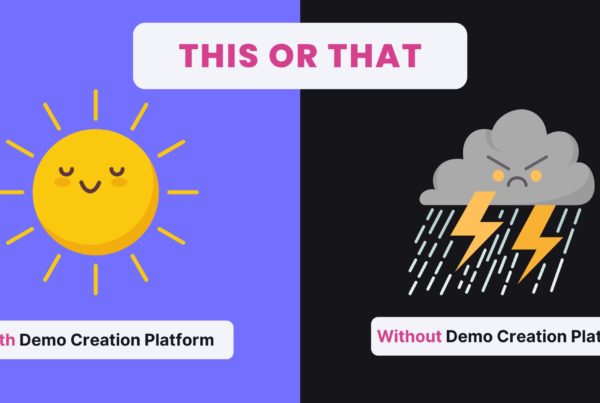Talk tracks in sales should have always been customized based on variables such as titles, departments, use cases, and sources, for example. Whether the sales rep followed their training or not, is another story.
Product-led growth channels have evolved our inbound and outbound games for the better. However, sales organizations are still catching up with learning how to train their reps to properly manage leads coming from these sources. One key variable to keep in mind is that once a prospect is in your product, they are now a user as well. This blurs the lines between the traditional “MQL” and “SQL” and this new world of the “PQL” aka product-qualified lead.
One common example of mismanagement is when a user who’s already using the free version of your product, reaches out to request an upgrade, however your sales rep is not trained to be agile and forces the user into an unwanted discovery call.
This upsets the user, makes your sales rep look clueless, and ultimately reflects negatively on your brand.
So the question is, what do we do to fix this?
There are various parts of adapting your sales motion to be a product-led sales machine. However, let’s focus on revamping your sales talk tracks and training your reps to be more agile and less rigid.
Deploying an intelligent product-led sales motion will require strong collaboration with your product and marketing colleagues. For example, defining what a product-qualified lead (“PQL”) is and the in-product triggers to track, will take product’s insight into what user events are the most meaningful and lead to conversion.
You’ll then want to align with marketing on what does the marketing message/touch looks like, and when sales comes in and what does it look like. Organizations like GitHub actually have scoring algorithms to help with determining how product-qualified a lead is.
Here are some examples of lead sources and how you might want to work them:
Lead Source: Inbound Web Form Submission
This is your classic inbound lead, where the prospect is either requesting a demo or contacting sales. The CTA is a key element to determine the talk track that your sales reps will select. The prospect is not a user yet so this is obviously not a product-led channel.
If the CTA is “Request a Demo” or something demo-centric, in addition to having as much pre-call research conducted as possible, your reps should have 1-2 discovery questions that will give powerful insight but will be quick to setup and answer.
Make sure the questions are focused on making your demo more personalized, and not some budget question. It’s also critical to allow the prospect to opt-in to answering these questions.
This might sound like: “Sally, thanks for taking the time to chat. In terms of today’s agenda, let’s get to your demo but before we dive in is it ok if I ask you two questions that will help me tailor the demo as much as possible?
If the CTA is “Contact Sales” or something similar, in addition to having as much pre-call research conducted as possible, have set of questions that map to your first-call discovery motion and then have a micro-demo ready to show them which is about 1/3 or less of the total duration of the call. You will have this demo pre-tailored to the prospect based on their personas and company type.
This might sound like: “Sally, thanks for taking the time to chat. In terms of today’s agenda, I’d love to learn more about why you contacted us and how we can be of service. Also, would you be interested in a quick demo of our product before we end today’s call?
Lead Source: Free Trial User
How this source is managed is relative to a few factors such as how long it’s been since the user signed up, how deep the user got into the product, what has their usage been like, did they request to talk to a sales rep or not, etc.
Marketing might have been sending emails to this user, so all your sales rep’s emails must be personalized and show that they are clearly aware of the current status of their usage of the product. It’s also important to communicate that you are an expert around what they are possibly trying to achieve based on their persona and company type, as well as what their future state might look like.
This might sound like: “Hey Liz, noticed you have been using the clipping feature a lot and have invited your team to use Widget Co. If you use the clipping featuring along with the measurement feature this should drive better conversion rates.
Here’s a video of our customer Nice Company Co explaining how they did it.
Also, I’m happy to hop on a call and help you set this up if you’d like. Simply let me know.”
All of this is related to your pricing model and what makes most sense for your unit economics. I’m going to automatically assume your price points are enough to include direct sales reps in your sales motion.
Lead Source: Product Sign-up
I personally have mixed feelings about how much to involve sales at this stage in the funnel. I certainly recommend not sending an automated message from a sales rep as soon as the signup is completed.
This is also relative to how much the user has engaged with the product. You might want to have a mixture between marketing and sales touches, but if your sales rep does reach out it should be to offer any help needed. Let the user dictate the path forward.
Lead Source: Freemium Product User
Like in a free trial, the prospect is a user of your product at this point. How this source is managed is relative to a few factors. You really want to know how much usage is occurring and by who. By including their usage data in a way that’s valuable to them, you’ll be able to connect in a more personal way and lower their guard.
These factors include variables such as how long the user has been using the product, how deep is the user into the product, what has their usage been like, did they request to talk to a sales rep or not, etc.
Marketing might have been sending emails to this user, so all your sales rep’s emails must be personalized and show that they are clearly aware of the current status of their usage of the product. It’s also important to communicate that you are an expert around what they are possibly trying to achieve based on their persona and company type, as well as what their future state might look like.
This might sound like: “Hey Liz, noticed you have been using the clipping feature a lot and have invited your team to use Widget Co. If you use the clipping featuring along with the measurement feature this should drive better conversion rates.
Here’s a video of our customer Nice Company Co explaining how they did it.
Also, I’m happy to hop on a call and help you set this up if you’d like. Simply let me know.”
Like the free trial source, all of this is related to your pricing model and what makes most sense for your unit economics. I’m going to automatically assume your price points are enough to include direct sales reps in your sales motion.
Lead Source: Outbound Prospecting
Outbound is tricky and leverages multiple approaches to beginning the conversation. This is about conversation development not closing.
Do not lead with showing them a demo. Focus on teaching them something via your outbound message and then make it so compelling that it would be silly not to schedule a call with you to learn more.
You might not even ever get to give a demo on the first call but if you do you must make sure that the prospect opts-in to receiving a demo.
If they do want a demo, then you’ll want to send them home with that same demo top play with post-call, and of course you can track engagement around.
This might sound like: “Hey Suzie, thanks for taking the time to learn more about what we have been seeing in the market around increasing sales velocity for B2B finance companies like yours.
Regarding an agenda, I wanted to show you this quick video explaining how Berreta Finance saw amazing results and then show you some stats from The Financial Press on how to drive ROI.
We obviously help with this so if at any point you’d like me to quick you a quick demo of our product, feel free to stop me and I can dive into the product for a few minutes.
Does that work for ya?”
You can go product-led at any stage of your sales motion by getting the prospect into the product via a leave-behind demo, free trial, etc. However remember, they have to opt-in.
I hope you found this breakdown helpful when trying to determine what the revamp of your talk tracks and workflows should be when including product-led lead sources.
If you want to learn more, feel free to reach out to me at Jorge (at) getreprise dot com.




